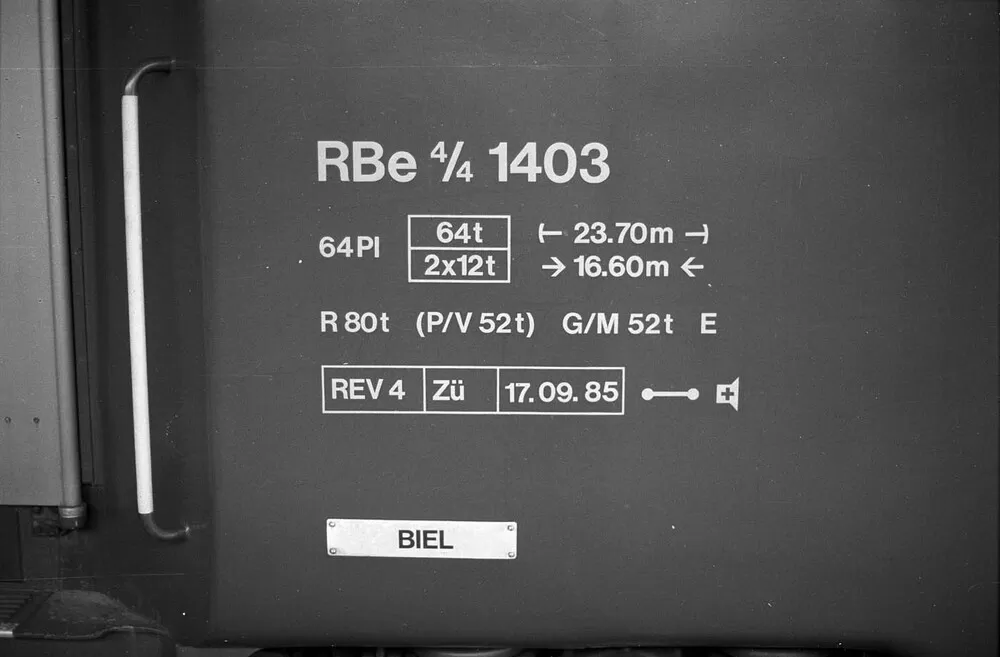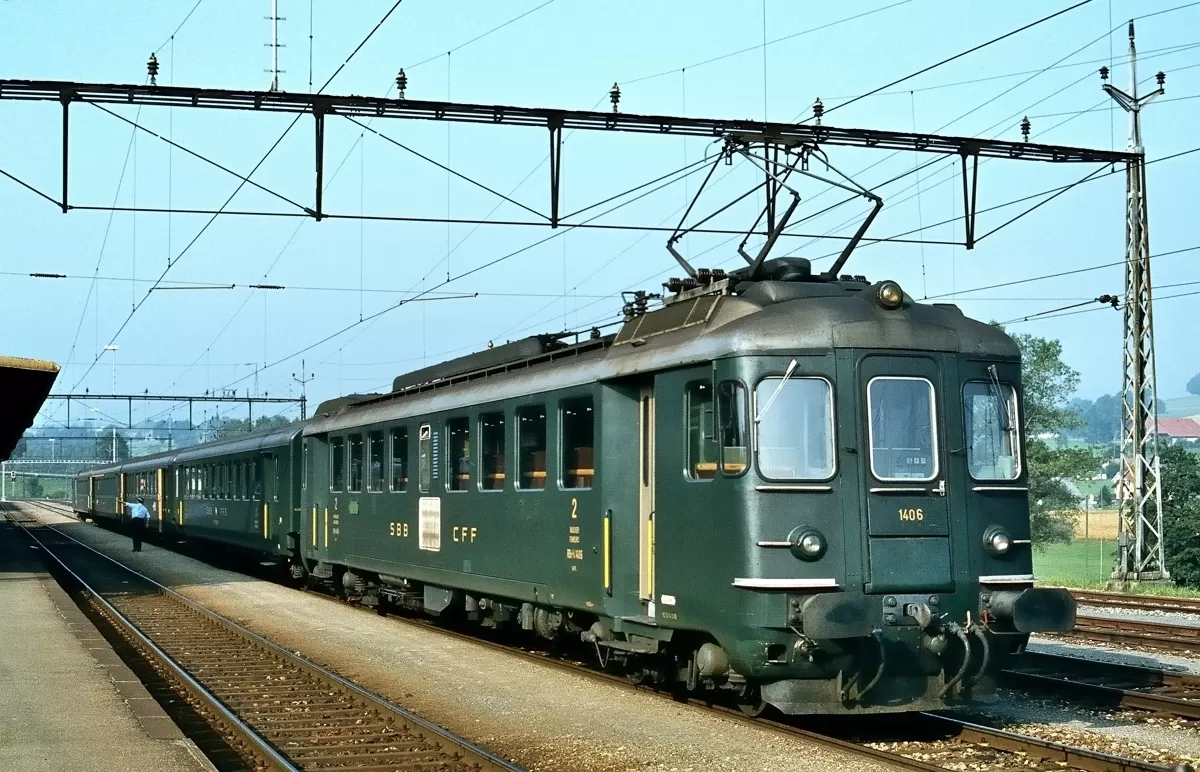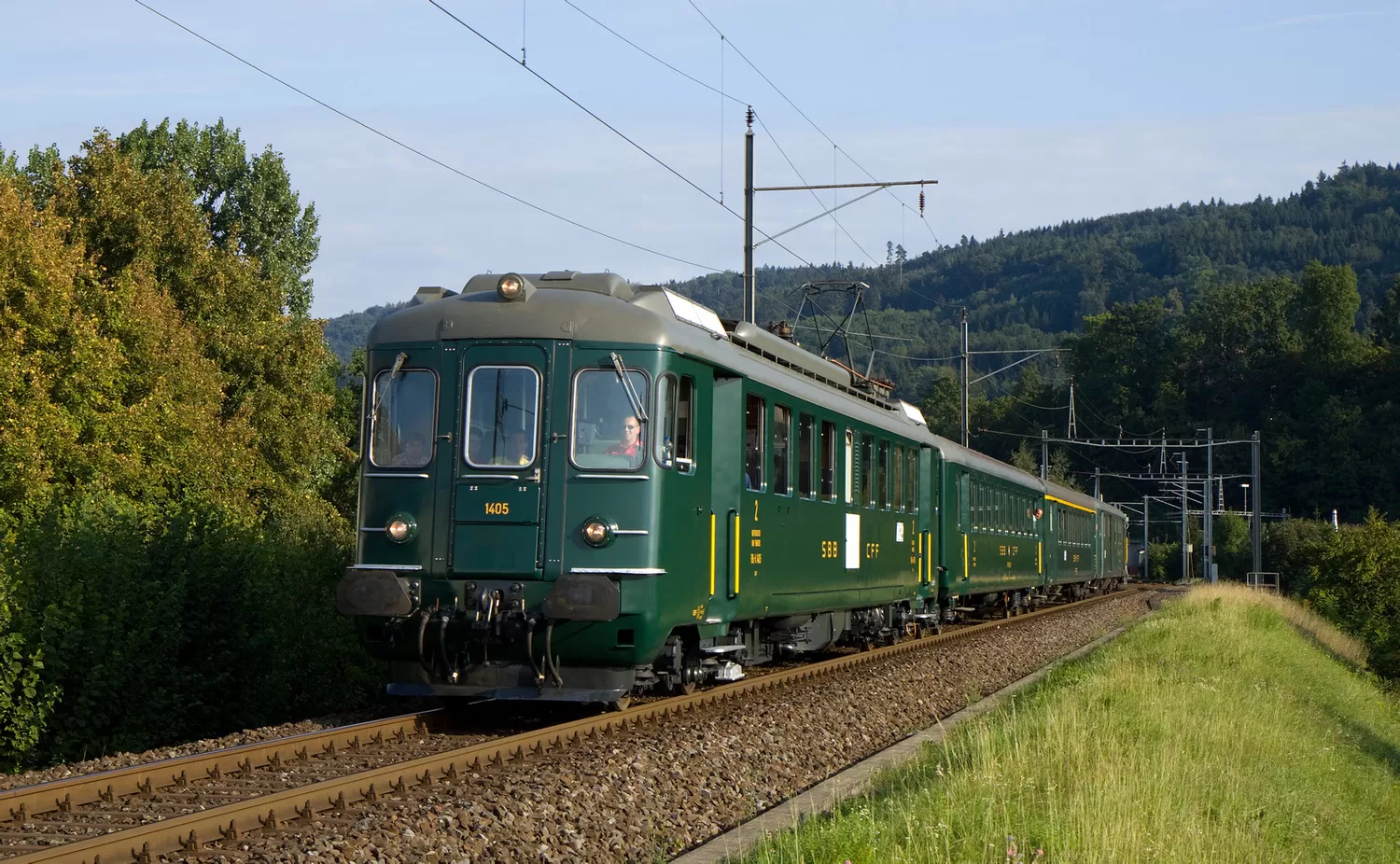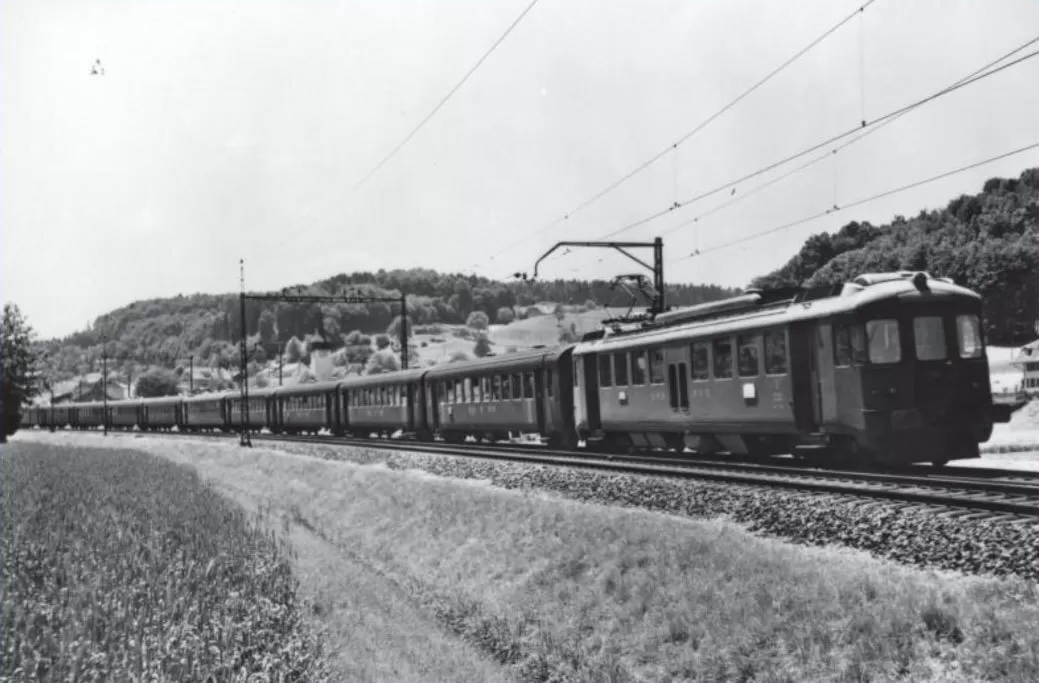
Quelle: bahnbilder-von-max.ch

Quelle: R. Werder - polier.ch

Quelle: bahnalltag.de

Quelle: Maarten van der Velden

Quelle: dsf-koblenz.ch

Quelle: C. Hertogs

Quelle: David Gubler
In 1964, Switzerland planned a national exhibition (Expo '64) in
Lausanne. This raised a unique challenge for the Swiss Federal
Railways (the SBB) that had to secure the transport of visitors
from all over Switzerland to Lausanne (at the time not so many
people owned a car and other modes of transport such as buses were
not yet available to such an extent as it is the case today). But
all modern locomotives were used in regular service and only old
locomotives were available for the necessary extra trains needed to
get people to and from the exhibition.
This was far from ideal and it became obvious new vehicles had to
be purchased. At first, the SBB looked to buy new locomotives from
existing series. The Re 4/4 and Ae 6/6 were available at the time
but neither proved to be a viable solution, either for logistic
reasons or performance issues. It also soon became apparent that
the trains had to operate as commuter trains (very flexible and
ready for use in a short timeframe) so, despite the bad experiences
with the RFe 4/4, the railcars seemed to be the solution. And the
success of the Ce 4/4 railcars of the BLS, offering high
performance and thus the desired traction, further comforted the
SBB in their choice.
The specifications for the new railcar were based on the Ce 4/4 of
the BLS:
- doors over bogies;
- one pantograph (since the introduction of the double abrasive
strips, a second pantograph was not considered necessary);
- inclined fronts.
The specifications also required the following:
- the railcars should be used both in regional and express
services;
- they should be able to replace the Ae 3/5 and Ae 3/6
locomotives;
- the power should amount to 1988 kW or 2720 hp (higher compared
with the BLS Ce 4/4 but also the SBB Re 4/4 locomotives and their
2450 hp);
- top speed of 125 km/h;
- regenerative braking;
- multiple-unit train control.
The units had to be available for testing purposes a reasonable
time ahead of the exhibition and also be conceived for the long
run, not only for the needs of the exhibition.
The mechanical construction of the vehicles was entrusted with the
Schweizerische Industrie Gesellschaft (SIG) and Schweizerische
Wagons- und Aufzügefabrik Schlieren (SWS) while the electrical
equipment came from Brown, Boveri & Cie (BBC) and from
Maschinenfabrik Oerlikon (MFO).
1959
Die technische Ausstattung ist größtenteils unter dem Fahrgastraum installiert, was die Eingänge im Vergleich zu Standard-Personenwagen deutlich höher machte. Weitere Komponenten zusammen mit der Toilette wurden in der Mitte des Fahrzeugs installiert, wodurch der Fahrgastraum in 2 Teile geteilt wurde.
Die verwendete Technologie verursachte einige Vibrationen und das Fahrzeug erhielt seinen Spitznamen "Schüttelbecher".
Die ursprüngliche Sitzanordnung: 64 Sitzplätze in einer 2. Klasse Konfiguration (32 Raucher- und 32 Nichtraucherplätze).
Die Triebwagen waren nur mit einem einfachen federnd gelagerten Abschlepphaken ausgestattet, der seitlich beweglich war, um das Kopplen der Fahrzeuge in engen Kurven zu erleichtern. Da aus ästhetischen Gründen auf eine Schraubenkupplung verzichtet wurde, konnten zwei Triebwagen nur mit einer Hilfskupplung miteinander verbunden werden. Diese war daher als Ausstattungsstück im Fahrzeug vorhanden. Vollkupplungen wurden einige Jahre später angebracht.
1959
Mai 24
Die ersten Test- und Einstellfahrten begannen kurz darauf. Doch nach nur einer Woche wurden die Testfahrten abgebrochen und zusammen mit dem zweiten Prototyp RBe 4/4 1404 gingen die 2 Einheiten in den Regelbetrieb auf den Strecken St. Gallen - Zürich - Bern und Biel - Lausanne - Genève (oder Brig). Die 2 Triebwagen erreichten eine tägliche Kilometerleistung von 1234 km bzw. 1522 km, was im Vergleich zu den damals eingesetzten Lokomotiven enorm war.
Die Triebwagen wurden zusammen mit passenden Personenwagen der EW-Serie ("einheitswagen" oder "Standardwagen") und Steuerwagen mit Gepäck- und Postabteil FZt4ü (später DZt) eingesetzt. Die Steuerwagen wurden aus den Standard EW I-Wagen gebaut, indem eine Fahrerkabine passend zum RBe 4/4 hinzugefügt wurde.
Wie erwartet waren die kurzen Testfahrten nicht ausreichend (die Fahrzeuge waren ungetestet und das Personal ungeschult). Dies führte zu regelmäßigen Problemen und die Triebwagen wurden oft durch Standardlokomotiven ersetzt, um den Betrieb sicherzustellen.
Betrifft Registrierungsnummer(n): 1401
1959
Juli
Betrifft Registrierungsnummer(n): 1405
1959
Juli 25
Betrifft Registrierungsnummer(n): 1404, 1405
1959
Dezember
Betrifft Registrierungsnummer(n): 1402, 1406
1960
Aus Sicherheitsgründen wurde das Zugschutzsystem bei allen Triebwagen entfernt und sie konnten den regulären Betrieb fortsetzen, indem ein zweiter Fahrer hinzugefügt wurde.
Betrifft Registrierungsnummer(n): 1405
1960
Januar 8
Betrifft Registrierungsnummer(n): 1403
1960
Mai
Gleichzeitig wurden auch in der Schweiz Testfahrten fortgesetzt.
1960
Juni 14
Die Untersuchung der 2 Brände ergab, dass Überhitzung die Ursache war, aufgrund der Positionierung der Belüftungsöffnungen im Dach, oberhalb der Türen (sie gewährten nicht genug Belüftung). Dies wird in der Serienproduktion geändert.
Betrifft Registrierungsnummer(n): 1401
1963
2008
Mai
Betrifft Registrierungsnummer(n): 1404, 1405
Quellen: http://www.dsf-koblenz.ch/index.php/08/10-04/118-2008-11-03-ersatzteilspender-rbe-1404
2008
November
Betrifft Registrierungsnummer(n): 1404, 1405
Quellen: http://www.dsf-koblenz.ch/index.php/08/10-04/118-2008-11-03-ersatzteilspender-rbe-1404
Haben Sie zusätzliche Informationen zu diesem Fahrzeug?
Helfen Sie uns, die Geschichte von RBe 4/4 1401 - 1406! Ihr Wissen ist wertvoll für uns und die gesamte Gemeinschaft, zögern Sie nicht, Ihre Fakten, Fotos oder Videos zu teilen:
Letztes Update am 13th von November 2019 um 21:39
Mitwirkende: Tudor C.
Diskussionsforum








